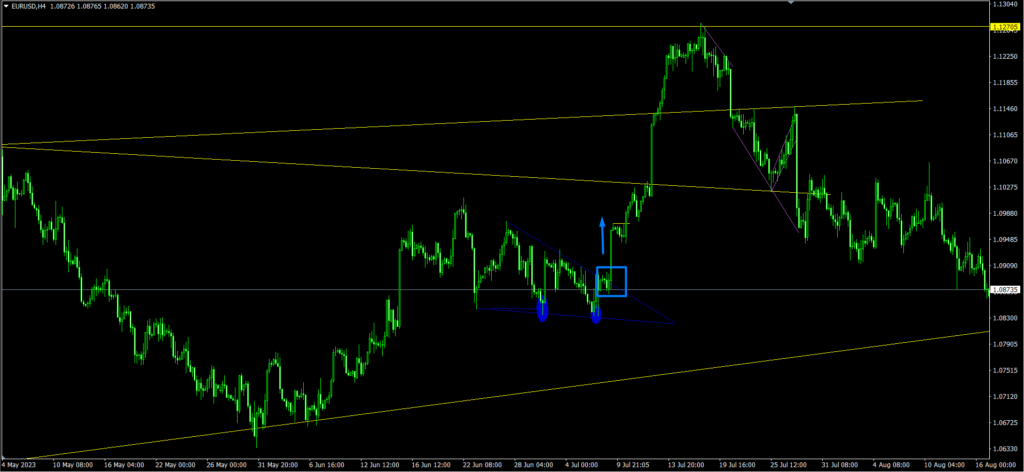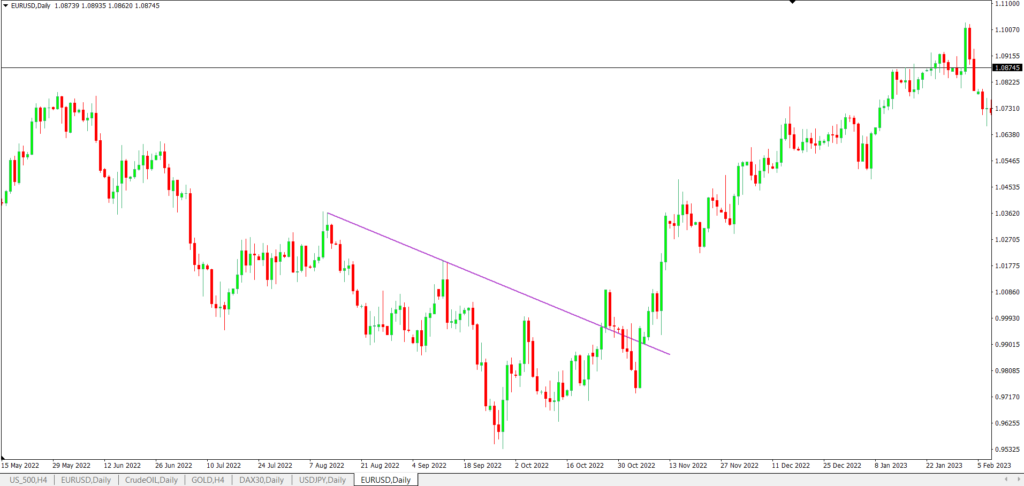breakout strategy
A breakout strategy is a popular approach in forex trading that involves entering trades when the price of a currency pair “breaks out” of a well-defined range or a significant level of support or resistance. Breakouts are often associated with strong momentum and the potential for significant price movement. Here’s an overview of a breakout strategy in forex trading:
Identifying Breakout Candidates:
Horizontal Levels: Look for currency pairs that have established clear support and resistance levels. Breakouts occur when the price decisively moves above resistance or below support.
Triangle, Rectangle, or Flag Patterns: These chart patterns can indicate potential breakouts as price approaches the apex or boundary of the pattern.
An example of Triangle, Rectangle, or Flag Patterns:
Volatility Squeeze: A period of low volatility often precedes a breakout. Traders look for narrowing price ranges as a potential precursor to a strong breakout move.
Confirmation Signals:
Volume: Higher trading volume during a breakout can confirm the strength of the move.
Candlestick Patterns: Bullish or bearish candlestick patterns, such as a “Bullish Engulfing” or “Bearish Harami,” can provide additional confirmation.
Technical Indicators: Momentum indicators like the Relative Strength Index (RSI) or Moving Average Convergence Divergence (MACD) can help confirm the potential breakout.
Entry Points:
Aggressive Entry: Some traders enter as soon as the price breaks out of the range. However, false breakouts can occur, so this approach carries higher risk.
Conservative Entry: Wait for a pullback to the breakout level (previous resistance turns into support in a bullish breakout) before entering. This approach aims to confirm that the breakout is genuine.
Stop-Loss and Take-Profit:
Place a stop-loss order below the breakout level (for a bullish breakout) or above the breakout level (for a bearish breakout) to limit potential losses.
Determine a take-profit level based on the expected price movement. This can be calculated using the height of the range/pattern or based on other technical indicators or support/resistance levels.

Risk Management:
Use proper position sizing to ensure that potential losses are manageable within your overall risk tolerance.
Avoid overleveraging, as breakouts can result in sharp price movements that may lead to significant losses if not managed carefully.
Timeframes:
Breakout strategies can be applied to various timeframes, from short-term intraday trading to longer-term swing trading.
False Breakouts:
Breakout strategies are not foolproof. False breakouts occur when price briefly moves beyond a level but then reverses. This highlights the importance of confirmation signals and risk management.
Example of False Breakouts:

News and Events:
Be aware of upcoming economic news releases or other events that could impact the market and potentially lead to false breakouts.
Practice and Adaptation:
Practice identifying and trading breakouts on historical charts to refine your skills. Adapt your strategy based on market conditions and feedback from your trading journal.
A breakout strategy requires careful analysis and the ability to react swiftly to changing market dynamics. It’s important to combine breakout analysis with other technical and fundamental factors to increase the probability of successful trades. Additionally, backtesting and forward testing your strategy in a risk-free environment can help you refine your approach before trading with real capital.
For more insights and educational content on commodities trading, visit ForexGoodBlog. Explore the world of crude oil trading and embark on a journey towards financial success in the commodities market.
Remember trading is not suitable for everyone, all the material here is for study only, trading is dangerous and can cause losses.
To learn more come to learn.